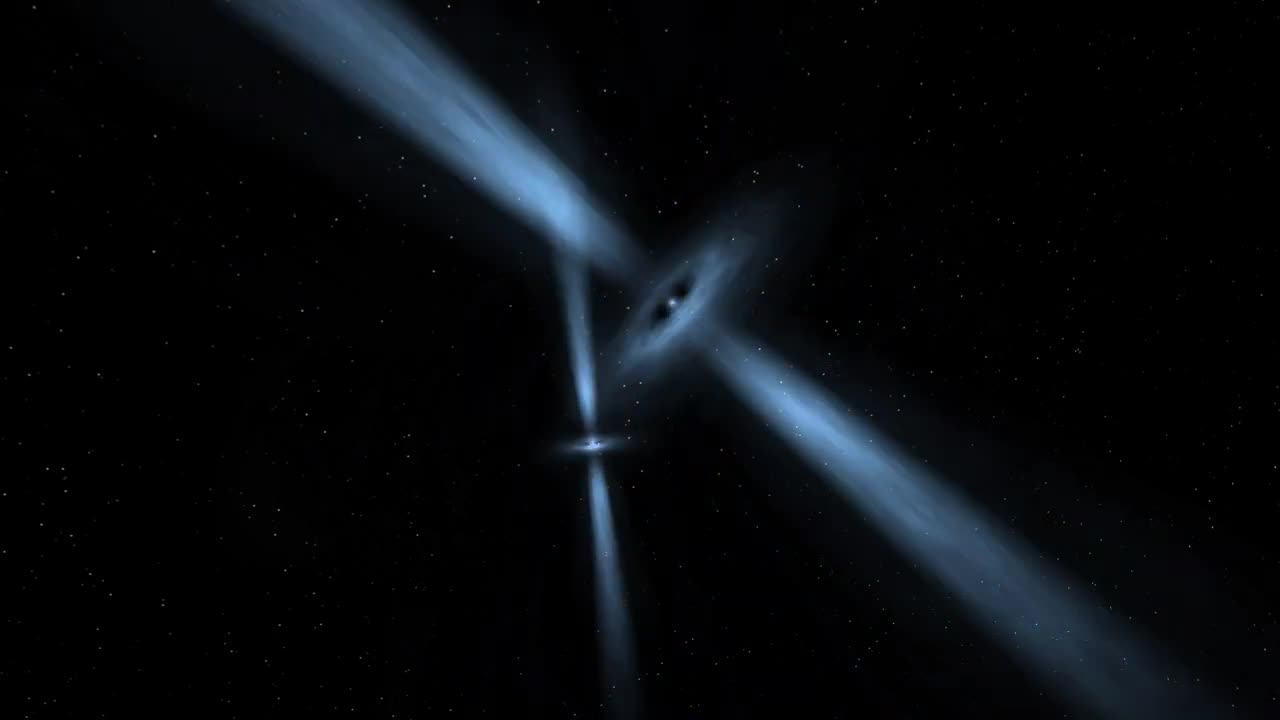Premium Only Content

Binary pulsars
#space #pulsar #astronomy #nasa #darkvoid
A pulsar (from the English acronym for pulsating star) is a neutron star that rotates very quickly and is highly magnetized. The emission that we detect on Earth from pulsars is periodic, with short and regular emission intervals. The radiation is produced at the magnetic poles, from where it emanates in very thin beams. Because the radiation beams are misaligned with the axis of rotation, a fixed point in space will be briefly illuminated by the radiation beam only once per spin of the star (as occurs with a lighthouse).
Neutron stars can spin up to several hundred times per second; a point on its surface may be moving at speeds of up to 70,000 km/s. In fact, neutron stars that rotate so quickly expand at their equator due to this dizzying speed. This also implies that these stars are a few thousand meters in size, between 10 and 20 kilometers, since the centrifugal force generated at this speed is enormous and only the powerful gravitational field of one of these stars (given its enormous density) is capable of preventing it from falling apart.
-
 1:48:36
1:48:36
Right Side Broadcasting Network
17 hours agoLIVE: President Trump Attends the Yankees Baseball Game - 9/11/25
183K26 -
 1:54:32
1:54:32
Badlands Media
11 hours agoBadlands Media Special Coverage - FBI Press Conference on Charlie Kirk's Assassination
150K20 -
 1:06:19
1:06:19
BonginoReport
12 hours agoManhunt Underway for Charlie Kirk’s Assassin - Nightly Scroll w/ Hayley Caronia (Ep.132)
321K254 -
 1:11:42
1:11:42
Flyover Conservatives
20 hours agoStructural Architect Destroys 9.11 Narrative... What Really Happened? - Richard Gage AIA | FOC Show
103K20 -
 1:51:14
1:51:14
Precision Rifle Network
15 hours agoS5E1 Guns & Grub - Charlie Kirk's "sniper"
59.9K18 -
 13:09:12
13:09:12
LFA TV
23 hours agoLFA TV ALL DAY STREAM - THURSDAY 9/11/25
419K95 -
 1:01:56
1:01:56
The Nick DiPaolo Show Channel
13 hours agoDems + Media Killed Kirk | The Nick Di Paolo Show #1792
133K121 -
 1:35:10
1:35:10
LIVE WITH CHRIS'WORLD
14 hours agoLIVE WITH CHRIS’WORLD - WE ARE CHARLIE KIRK! Remembering a Legend
42.5K7 -
 50:24
50:24
Donald Trump Jr.
14 hours agoFor Charlie
406K504 -
 2:05:22
2:05:22
Quite Frankly
15 hours agoTipping Point USA? & Open Lines | 9/11/25
81.3K8